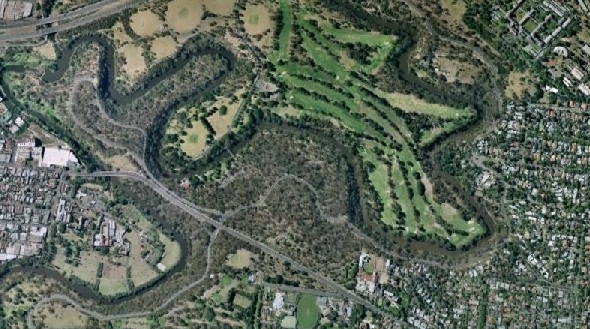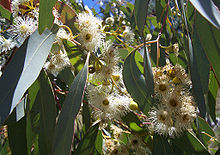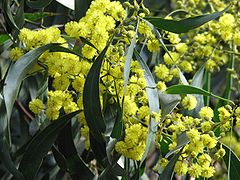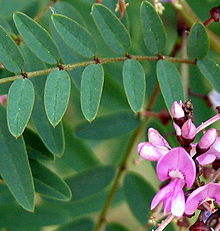Those who have been attracted to Studley Park are likely to nominate the proximity of the Yarra River and the Studley Park bush-land as the key incentive for being drawn to this inner city sanctuary.

The vast expanse of Yarra Bend/Studley Park is a haven for brush-tail and ring-tail possums, birdlife of many species including masked wood-swallows, rainbow lorikeets, red-rumped parrots, to yellow-tailed cockatoos, river darter and more recently flying-foxes. And resident water-rat! The parklands are a superb asset, the steep slopes and formerly flood-prone land through which the river snakes for 12 kilometres being a fortunate remnant, as well as a poignant reminder of what was. Extensive clearing occurred for farming and timber harvesting following early settlement. The last stands of trees in the park include some old enough to have sheltered, provided food sources and even bark canoes and tools for the original Aboriginal occupiers, the Wurundjeri Wurrung people who managed the land for thousands of years.
The very name Wurundjeri is linked to the Eucalyptus viminalis (wurun meaning manna gum) of which there are some remnant examples, sometimes hybridized (i.e., being crossed with other species; an example is marked on the looped walking track to the east of the Boathouse). Edible white, sweet and crumbly sap extrusions on the leaves (manna) were gathered on the ground by the Wurundjeri people. Also, the wood of the tree was used for the making of shields.
Luckily, some dense stands of River Red Gum (Eucalyptus camaldulensis) and Yellow Box (Eucalyptus melliodora) also remain.

Eucalyptus melliodora
The large shady River Red Gum is oddly named after a garden near a monastery close to Naples where it was cultivated and first described. Extensive throughout all mainland states, and commonly found along watercourses in Australia, River Redgums (or Karra, as they were known to the original inhabitants) are our most widespread tree. The tree is valued for honey and its durable hardwood and was of great significance to Aboriginal life, both for making canoes and for corroboree (ceremonial meeting).
The Yellow Box is not as large; its name (mel being Latin for honey, odora for the scent of the flowers) denotes one of the many uses of this beautiful blue-green leafed tree. Though valued as hardwood, the tree is considered the best native tree for the production of honey, having excellent taste and golden colour. Needless to say, the blossom is very attractive to birds. Few gardens are large enough for the River Red Gum, but the smaller Yellow Box may suit some.
The woodland understory includes the lightwood Acacia implexa (an attractive long-leafed upright small tree), and Acacia melanoxylon (blackwood). In deep moist soils the blackwood can grow very tall but it remains part of the understory in the natural environment, becoming stunted on basalt plains. Valued for its timber, the tree was used by the Aborigines to make fibre for fishing lines and also for making weapons and deriving medicine.
Also common is the golden wattle Acacia pycnantha, Australia's national floral emblem. Fast growing and drought resistant, the tree prefers well drained soil and is a good screening tree as well providing a source of food, medicine and glue.

Acacia pycantha
The above Acacias do not have leaves, but instead have flattened stems which are called phyllodes. In contrast, Acacia mearnsii (black wattle) has fern like dark green pinnate leaves (pinnate meaning feather, wing or fin). It is an attractive, fast growing open spreading tree, but sometimes short-lived. The delicate appearance of its foliage is shared with the silver wattle Acacia dealbata though here the pinnate leaves of the latter are bluish green. This tree prefers deep moist soil rather than the dryer, well-drained requirements of the Acacia mearnsii.
The two trees can also be distinguished by the length of the leaves which are longer in the mearnsii. Wood from the latter tree was used for weapons and the bark provided twine, medicine and gum (the gum useful for food and drink). Timber derived from Acacia dealbata was sufficiently strong for making axe handles. Other parts of this tree also provided gum which, when combined with bark, produced ointment for medicinal purposes. This tree is a source of essential oil, the aroma significant enough to be used for making perfume in France.
Many groundcovers, grasses and shrubs also thrive in Studley Park, from tussock grasses, Poa morrisii, Lomandra species, herbs and sedges, to shrubs including the pretty Correa glabra, and curious Dodonea viscosa (or hop bush) the delicate Indigofera australis, fast-growing Acacia acinacea (gold-dust wattle) and the subtle Callistemon sieberei with its cream, sometimes soft pink, brush-like flowers.

Indigofera australis
With more than 230 indigenous plants found in the park, there is much that is adaptable for gardens.
A SELECTION OF YARRA BEND FLORA
(A thorough inventory and status of vegetation, including species under risk of extinction, can be found on the Parks Victoria website
Vegetation of Yarra Bend Park1.37MB PDF)
1. BOX IRONBARK WOODLAND
Eucalyptus leucoxylon Yellow Gum
Eucalyptus melliodora Yellow Box
Tall Shrubs and Climbers
Acacia implexa Lightwood
Acacia mearnsii Black Wattle
Acacia paradoxa; Hedge Wattle
Acacia pycnantha Golden Wattle
Bursaria spinosa Sweet Bursaria
Cassinia longifolia Dogwood
Cassytha melantha Coarse Dodder-laurel
Clematis microphylla Small-leaved Clematis
Exocarpos cupressiformis Cherry Ballart
Hardenbergia violacea Purple Coral-pea
Kunzea ericoides Burgan
Low Shrubs
Acacia acinacea Gold-dust Wattle
Atriplex semibaccata Berry Saltbush
Myoporumsp. 1 Sticky Boobialla
Olearia ramulosa var. ramulosaTwiggy Daisy-bush
Sedges, Lilies, Rushes and Grasses
Arthropodium strictum Chocolate Lily
Austrodanthoniaspp. Wallaby Grass
Austrostipaspp. Spear Grass
Dianella admixta Black-anther Flax-lily
Lomandra filiformis Wattle Mat-rush
Herbs including Daisies
Asperula conferta Common Woodruff
Bracteantha viscosa Sticky Everlasting
Convolvulus erubescens Pink Bindweed
Crassula sieberiana Austral Stonecrop
Disphyma crassifolium Rounded Noon-flower
Einadia hastata Saloop
Einadia nutans Nodding Saltbush
Gonocarpus tetragynus Common Raspwort
Kennedia prostrata Running Postman
Lepidium pseudotasmanicum Shade Pepper-cress
Pimelea curviflora Curved Rice-flower
Senecio hispidulus var. hispidulusRough Fireweed
Vittadinia cervicularis Annual New Holland Daisy
Wahlenbergia communis Tufted Bluebell
2. FLOODPLAIN RIPARIAN WOODLAND
Trees
Eucalyptus camaldulensis River Red Gum
Tall Shrubs & Climbers
Acacia dealbata Silver Wattle
Callistemon sieberi River Bottlebrush
Calystegia sepium Large Bindweed
Clematis microphylla Small-leaved Clematis
Gynatrix pulchella Hemp Bush
Hymenanthera dentata Tree Violet
Leptospermum aff. lanigerumFoothill Tea-tree
Leptospermum obovatum River Tea-tree
Melaleuca ericifolia Swamp Paperbark
Ozothamnus ferrugineus Tree Everlasting
Pomaderris aspera Hazel Pomaderris
Low Shrubs
Coprosma quadrifida Prickly Currant-bush
Goodenia ovata Hop Goodenia
Mentha australis River Mint
Rubus parvifolius Small-leaf Bramble
Solanum aviculare Kangaroo Apple
Urtica incisa Scrub Nettle
Sedges, Lilies, Rushes & Grasses
Agrostis avenacea Common Blown-grass
Carex appressa Tall Sedge
Juncusspp. rushes
Lomandra longifolia Spiny-headed Mat-rush
Microlaena stipoides Weeping Grass
Phragmites australis Common Reed
Poa ensiformis Sword Tussock-grass
Herbs including Daisies
Acaena novae-zelandiae Bidgee-widgee
Alternanthera denticulata Lesser Joyweed
Centipeda cunninghamii Common Sneezeweed
Crassula helmsii Swamp Crassula
Einadia nutans Nodding Saltbush
Geranium inundatum Naked Crane's-bill
Lycopus australis Australian Gipsywort
Lythrum hyssopifolia Small Loosestrife
Persicariaspp. knotweeds
Rumex bidens Mud Dock
Senecio minimus Shrubby Fireweed
